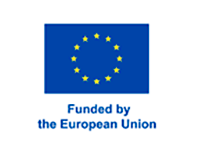The global pandemic has left profound psychological effects, giving rise to a condition often referred to as PPSD (Post-Pandemic Stress Disorder). While not yet classified as an official medical diagnosis, this disorder mirrors many characteristics of post-traumatic stress, manifesting in long-lasting emotional, mental, and behavioral challenges. In this article, we explore the complexities of ppsd disorder, its symptoms, underlying causes, and pathways to recovery.
What is PPSD Disorder?
PPSD is a term used to describe the lingering psychological and emotional effects experienced after the COVID-19 pandemic. Much like trauma-related disorders, it develops when individuals struggle to process and recover from the overwhelming stressors associated with isolation, fear of illness, loss of loved ones, financial instability, and disruption of normal life.
This condition shares similarities with PTSD but is uniquely tied to the pandemic experience, encompassing a mix of anxiety, depression, grief, and social withdrawal.
Common Symptoms of PPSD
Identifying ppsd disorder symptoms is essential for early intervention and effective support. The most commonly reported signs include:
- Intrusive thoughts and flashbacks: Constant reminders of pandemic hardships, such as images of hospitals or news reports.
- Heightened anxiety: Fear of future outbreaks or hypervigilance around germs and social interactions.
- Depressive episodes: Persistent sadness, hopelessness, or lack of motivation.
- Sleep disturbances: Insomnia, vivid nightmares, or difficulty maintaining restful sleep.
- Social withdrawal: Avoiding gatherings, reluctance to return to workplaces, or fear of public spaces.
- Emotional numbness: Difficulty experiencing joy or connection with others.
These symptoms often overlap, compounding the distress and making recovery challenging without structured support.
Causes and Risk Factors of PPSD
Several underlying causes contribute to the development of ppsd disorder, often influenced by personal, social, and environmental factors.
- Prolonged isolation disrupted natural social bonds and support systems.
- Health-related fears, including fear of infection and uncertainty about long-term effects of illness.
- Economic instability from job losses or financial insecurity.
- Grief and trauma associated with losing family members or friends to the pandemic.
- Media saturation amplifying fear and reinforcing feelings of danger.
- Pre-existing mental health conditions that heightened vulnerability.
The intensity of these risk factors varies, but combined, they create a fertile ground for persistent psychological distress.
PPSD vs. PTSD: Key Differences
While PPSD draws comparisons with post-traumatic stress disorder, there are distinct differences.
| Aspect | PTSD | PPSD |
| Trigger | Often linked to a single traumatic event (accident, war, assault) | Arises from prolonged global trauma of the pandemic |
| Duration | Typically acute trauma aftermath | Long-term, compounded by ongoing uncertainty |
| Social Impact | May affect select individuals or groups | Widespread, affecting entire populations |
| Symptoms | Flashbacks, avoidance, hyperarousal | Overlaps with PTSD but includes pandemic-specific fears and anxieties |
Long-Term Effects of Untreated PPSD
Ignoring ppsd disorder can result in significant long-term consequences:
- Chronic anxiety and depression
- Substance misuse as a coping mechanism
- Strained personal and professional relationships
- Reduced productivity and burnout
- Increased risk of self-isolation and suicidal thoughts
Recognizing these risks underscores the importance of timely intervention.
Pathways to Recovery from PPSD
Recovery from PPSD is possible through a combination of professional support, self-care, and community rebuilding. Effective strategies include:
1. Professional Therapy
- Cognitive Behavioral Therapy (CBT): Helps restructure negative thought patterns.
- Trauma-focused counseling: Targets specific pandemic-related stressors.
- Group therapy: Creates shared healing through collective experiences.
2. Medication Support
In severe cases, antidepressants or anti-anxiety medications may be prescribed under medical supervision.
3. Lifestyle Adjustments
- Regular physical activity to regulate mood and reduce anxiety.
- Mindfulness and meditation practices to manage stress.
- Healthy sleep hygiene to restore energy and emotional balance.
4. Rebuilding Social Connections
- Gradual reintegration into social environments.
- Support networks with family, friends, and communities.
- Participation in community-based recovery programs.
5. Limiting Media Exposure
Reducing consumption of distressing pandemic-related content can ease triggers and lower anxiety.
Final Thoughts
PPSD disorder is a pressing mental health challenge shaped by the collective trauma of the pandemic. While symptoms may vary in severity, acknowledging the condition and seeking proper support is the cornerstone of recovery. With professional guidance, lifestyle changes, and community resilience, individuals can overcome PPSD and rebuild a balanced, fulfilling life.


